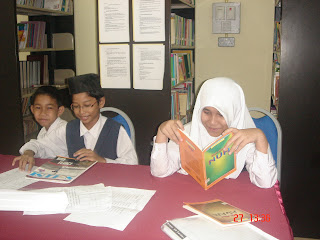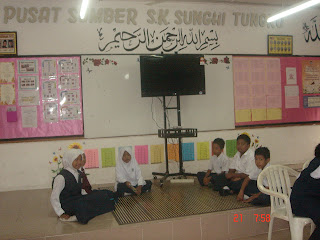Bedtime Story
Teaching Tips
Using Music in the ESL Classroom
| Music is the universal language of mankind. | |
| Henry Wadsworth Longfellow |
Benefits of using Music
- improves concentration
- improves memory
- brings a sense of community to a group
- motivates learning
- relaxes people who are overwhelmed or stressed
- makes learning fun
- helps people absorb material
Words for Wisdom
How to Teach Grammar
It's important to teach English grammar to promote growth, understanding and knowledge, and to improve writing performance, creativity and insight. Discover how English grammar skills can provide a tool for learning other languages with help from an English specialist and president of a theater group in this video on English grammar.
Tips on GAMES
What is a game, really?
In this definition every activity that brings pleasure is a game. For example, people dance, play musical instruments, act in plays, and play with dolls and model trains.
- a set of components may be used with different rules.
- a set of rules can be used with different components.
- What should the board look like?
- How many spaces should it have?
- What shape do the spaces have: square, hexagonal, or round?
- How are the spaces laid out?
- Are all the spaces the same size or are they of different sizes?
- How many pieces are there?
- What do the pieces look like? Does a piece take more than one space when played?
- Game rules
- Goal
- The course of the game is never the same - chance
- Competition
Games Rules: As already discussed, the rules and the components define the game. Everything that is in the rules is part of the game. Everything that is not in the rules does not belong in the game. The rules are the borders and the heart of the game. They only refer to the game and never exist outside of the game. Although the game has rules which are like laws, playing a game is voluntary and cannot be forced on the players. Whoever plays a game, voluntarily binds himself to the rules. Where force is involved, there is no game. All games without rules are not "games with rules".
Goal: Every game has a goal. Thus, there are two definitions:
- The victory condition or requirement.
- The strategy needed to win the game.
The course of the game is never the same - chance
- with a random generator (e.g. dice)
- with different start-up situations (e.g. dealing cards)
- with incomplete information (e.g. moving at the same time, unknown strategy of your fellow players)
- with a very high number of move options
Competition:
Each game demonstrates competition. Players compete in a game. There are winners and losers. Even in cooperative games or when players work as a team, competition exists. In this case, the players compete against one of the predetermined situations, that means the players play cooperatively against the game system. The same applies to solitaire games (e.g. Patience, Solitaire). A competition needs a system, in which the game results can be compared. The competition and the measurement of the game results are criteria which limit the game and the cause that certain feelings won't be fulfilled throughout the game as in books, movies, and music. For example, love, freedom, harmony, pain, sorrow, etc. The criteria "competition" is also the reason why it is so difficult to develop games which are not aggressive.
Basic Criteria
- Common experience
- Equality
- Freedom
- Activity
- Diving into the world of the game
Common experience: Games bring people together, regardless of gender, generation, and race. Most games are multi-player games which lead to group experiences, which linger after the game is over. But there are groups of games which are played alone. These are the so-called solitaire games and most computer games.
- thinking, combining
- planning
- making decisions
- concentrating
- training your mind
- receiving knowledge
- understand the impact of systems
- rules, accepting laws
- to learn how to work with others
- to learn how to lose
- to learn more about yourself and others
- to use fantasy and creativity
- practice skillfulness
- practice reactions
Diving into the world of the game:
Whoever plays, leaves behind reality and dives into the world of the game. These game worlds are comparable to reality. This statement still applies to the big difference between the two worlds. I want to substantiate that the course of reality and the course of the game world will be steered by the same factors:
- laws/rules (natural laws and human laws - game rules, which are like laws)
- chance
- your own doing (within the frame of predetermined laws)
- competition (achievement of the best)
- course and end are unknown same language and means of expression
New
| Step 1 Vowel names | ||||||||||||
| Step 2 Consonant names | ||||||||||||
| Step 3 More vowels | bee | foot | ||||||||||
| Step 4 More consonants | wet | which | ||||||||||
| Step 5 Clusters of vowels | ||||||||||||
| Step 6 Clusters of consonants | ||||||||||||
| Step 7 More vowel sounds | ||||||||||||
| Step 8 Consonant clusters 2 | ||||||||||||
| Step 9 Vowel clusters 2 | ||||||||||||
| Step 10 Various other spellings | ||||||||||||
| Appendix | Days of the week | Months of the year | Numbers 1-1,000,000 | |||||||||
FUN in SONGS
Songs are a FUN way to learn English
You can't expect young children to learn English without a LOT LOT LOT of repetition...Making this repetition fun is down to the skill of the teacher and the resources you choose.
Songs are absolutely IDEAL for language learning as children love them and will want to hear them over and over again - perfect for vocabulary acquistion and language learning.
You may have noticed that if you expect your child or pupils to sit still and listen to you while you show them flashcards, you will not have their attention for long!
Successful ESL teaching is all about variety, movement and using resources that appeal to young children. Young children love games, they love stories and they love songs.
That's why I created these particular songs, as they go hand in hand with the first ten preschool stories, and this was really a missing element in the toolbox. However let me add right now that you can use these songs alone, without the stories too - more on that at the bottom of this page.
Too many words for ESL
One problem with English songs is that very often there is far too much vocabulary and language for ESL learners - after all they were conceived for native speakers.
If you want to get your pupils to the point that they can actually SING along to these songs then you need simple ones, not too many words, and it's even better if the words match up with what you are already teaching in class.
Using games, stories, drama and songs you are now equipped to tackle any topic with the variety that young children need. Otherwise they have a tendency to be bored in two minutes flat.
Teaching English Songs Review
So now for a quick review of the songs themselves - then you may want to listen to the extracts further down...
Simple and repetitive, written especially for young ESL / EFL learners.
The vocabulary and language in the songs matches stories 1 to 10 - Use to sing, move to and act out the stories.
Suitable for teaching individuals, small groups and classrooms
Downloadable activity sheet included for each song. Sing along, dance, do special actions and play suggested games to use during the song.
Activity sheets include ways to act out each song - for individuals and small groups.
With English learners you want to get to the point where the children can sing along, not just listen, and you can do that with these songs.
Musical development in the songs - it's not "tin-can" looping because instrumentation varies as the song moves along making for more satisfiying listening and appreciation, and keeping the song interesting for a long time.
Varied musical styles - give the children a musical education as well as teaching English.
Most songs are originals with some classics with words adapted for ESL and fresh arrangements.
The songs are written to go hand in hand with the two sets of preschool stories. HOWEVER they work on their own too.






































